Middle School
Level II is generally for dancers in grades 5-7 in fall 2024, older beginners, or more advanced younger dancers. Level III is generally for intermediate dancers in middle school in fall 2024, or older beginners. Level IV is generally for intermediate/advanced dancers in high school in fall 2024 but occasionally is suitable for advanced middle school dancers.
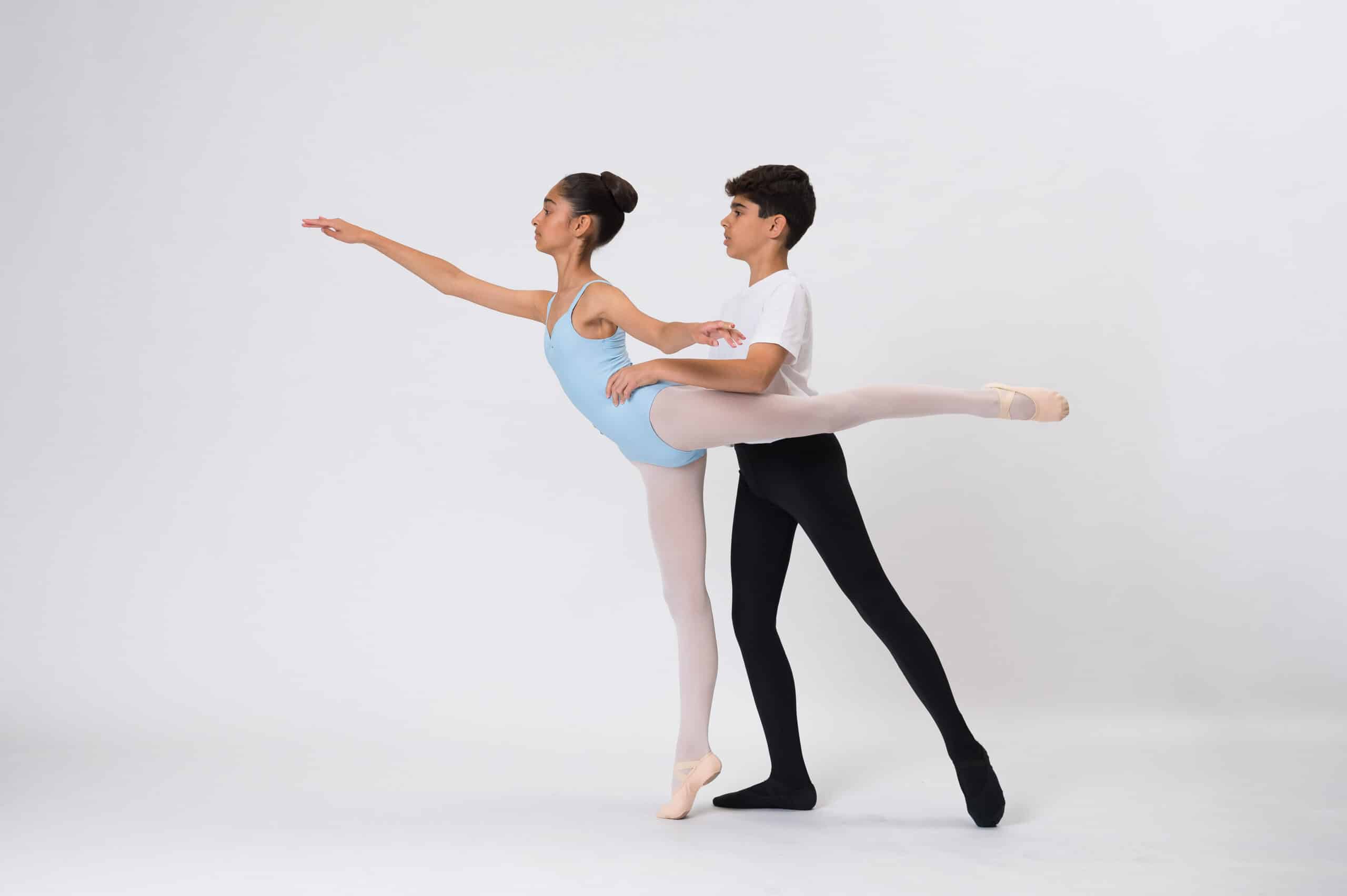
Age Group Details
Class Descriptions:
Ballet
Ballet Technique classes (for students second grade and up) are the foundation for training at RCD and focus on developing a solid ballet technique with emphasis on understanding correct body placement, proper use of turn out, coordination of the upper body (epaulement), and use of arms (port de bras). RCD’s unique syllabus exposes students to aspects of traditional French, Vaganova (Russian), and American techniques. Class begins with work at the barre to build strength and coordination, followed by center exercises, culminating in a grand allegro combination or variation. Clear explanations of exercises and theory help students use the ballet vocabulary in a simple, practical way that leads to increased technical understanding, healthy physical development, and lifelong enjoyment.
Pre-Pointe is for dancers in Level III or IV wishing to prepare for eventual pointe work through strengthening and conditioning. Progression to pointe work is by evaluation and recommendation only. Dancers should be taking a bare minimum of two ballet technique classes per week. Participation in pre-pointe is not a guarantee for advancement to pointe or Level IV in the following year. Pointe IV Beginner is for intermediate/advanced dancers in Ballet IV taking a minimum of three ballet technique classes per week. This is the only pointe class new pointe dancers may take. A ballet technique class always must be taken on the same day immediately prior to the pointe class. Experienced pointe dancers may add a Pointe IV Beginner class. Pointe IV Experienced is for intermediate/advanced dancers in Ballet IV taking a minimum of three ballet technique classes per week. A ballet technique class always must be taken on the same day immediately prior to the pointe class.
Modern
RCD boasts a strong Modern Dance program rooted in classical modern traditions. In addition to our long-standing Graham-based technique offered by Amy Piantaggini, this year Janel Fitzgerald brings Horton-based technique to our Modern programming. Modern dance appeals to the creative, artistic soul in everyone because of its expressiveness and freedom of individuality. The Conservatory’s Modern Dance classes (for students second grade and up) introduce students to elements of Graham-based technique including fundamental principles of contraction/release, spiral, and shift of weight. The students focus on movement from the inside out, encouraging use of breath, energy, and connection. Class begins with traditional floorwork exercised, progresses into standing work, moves to travelling phrases across the floor, and culminate in movement phrases that explore dynamic possibilities. A strong foundation technique, Graham-based modern prepares students to use breath, opposition, and strength that carries over into other disciplines. Modern dance is strongly encouraged for dancers aspiring to a college dance program.
Hip Hop
Hip Hop is a stylized form of street dance that includes uprock, breaking, popping, locking, boogaloo and the robot. Class begins with warm up exercises in the center that increase control, coordination, and rhythm, followed by dance combinations that teach dynamics, shading, phrasing, and musicality. This class includes extended rhythmic phrases and improvisation exercises. The goal is to develop expressive dancers who are equally strong as performers.
Contemporary
Contemporary dance, available to Level III and up, pushes boundaries of previously learned techniques and styles and will pull from a more “pedestrian”, human, and creature-like vocabulary. The intention is to break down patterns and habitual movement qualities and find newness and awareness of where the body naturally goes and how it naturally moves. This class will examine an array of styles from Modern-Contemporary to Contemp-Pop with an exploration of musicality, movement style, dynamic shifts, space, time, spinal mobility, movement initiation, physicality, floor work- identifying correct pathways for moving in and out of the floor with alignment to help injury prevention, flying through space, exploratory games, and partnering work. There will be strong association with the breath to keep calmer muscles when learning new and difficult information and to supplement the muscles when required to move with extreme physicality. There is a place in this class for every curious dancer who is interested in creativity for dance making and dance understanding. Ballet is strongly recommended.
Jazz
Jazz is a dance form that appeals to everyone because of its energy, variety, and vitality. Jazz dance classes (which students can begin at second grade) explore contemporary and classic jazz dance, rooted in the vernacular (social dance) forms, that draws inspiration from a wide range of music including jazz, swing, blues, pop, soul and funk. As the official home of the internationally recognized Jazz Dance Technique & Syllabus by creator/author James Robey, Conservatory jazz classes begin with a warm-up to develop strength, flexibility, correct alignment and coordination, followed by progressions across the floor, and culminates in extended dance combinations. The movement explores a range of styles in both lyrical and percussive disciplines with a focus on jazz elements such as isolations, swing, and rhythm. The goal is to develop dancers who are expressive, dynamic, musical and passionate. Ballet is strongly recommended.
Tap
Tap Dance is a timeless art that combines dance and percussion. Tap dancers in musicals, movies, television, commercials, and concerts inspire us with their infectious rhythms. Tap Dance classes (for students grade 2 and up) explore the two traditions of rhythm tap (hoofing) and Broadway tap. Class begins with warm up exercises in the center that increase control, coordination, and rhythm, followed by across the floor exercises that teach dynamics, shading, phrasing, and musicality, concluding with extended rhythmic phrases and improvisation exercises. The goal is to develop tap dancers that are equally strong musicians, dancers, and performers. Our littlest tappers can attend Broadway Babies, our newest offering. (See Young Dancers Program).
 Grace Reddy (formerly Liu Zhao Hui) trained at China’s national school of dance, the Beijing Dance Academy, studying classical Chinese dance and ballet under Russian masters following the Vaganova System. Upon graduation from the Academy, she joined China’s foremost dance company, the Chinese Dance Theater. During a 13-year career with the company, she toured throughout China and other Asian countries performing on stage, in movies and on television. She has been a featured dancer in many major Chinese dance productions including A Dream of Red Mansions, The Princess of Wen Cheng, Tong Que Tai, Bao Lian Deng, and Deng Xiao Ping Song Ge. She has performed as a visiting artist at universities in the United States and toured the Hawaiian Islands performing a program of classical Chinese dance under the auspices of Beijing University. After immigrating to the United States, Grace founded the Tang Yung School of Chinese Dance and has performed with the Beijing Dance Company of New York and the Zhong Mei Dance Company.
Grace Reddy (formerly Liu Zhao Hui) trained at China’s national school of dance, the Beijing Dance Academy, studying classical Chinese dance and ballet under Russian masters following the Vaganova System. Upon graduation from the Academy, she joined China’s foremost dance company, the Chinese Dance Theater. During a 13-year career with the company, she toured throughout China and other Asian countries performing on stage, in movies and on television. She has been a featured dancer in many major Chinese dance productions including A Dream of Red Mansions, The Princess of Wen Cheng, Tong Que Tai, Bao Lian Deng, and Deng Xiao Ping Song Ge. She has performed as a visiting artist at universities in the United States and toured the Hawaiian Islands performing a program of classical Chinese dance under the auspices of Beijing University. After immigrating to the United States, Grace founded the Tang Yung School of Chinese Dance and has performed with the Beijing Dance Company of New York and the Zhong Mei Dance Company.

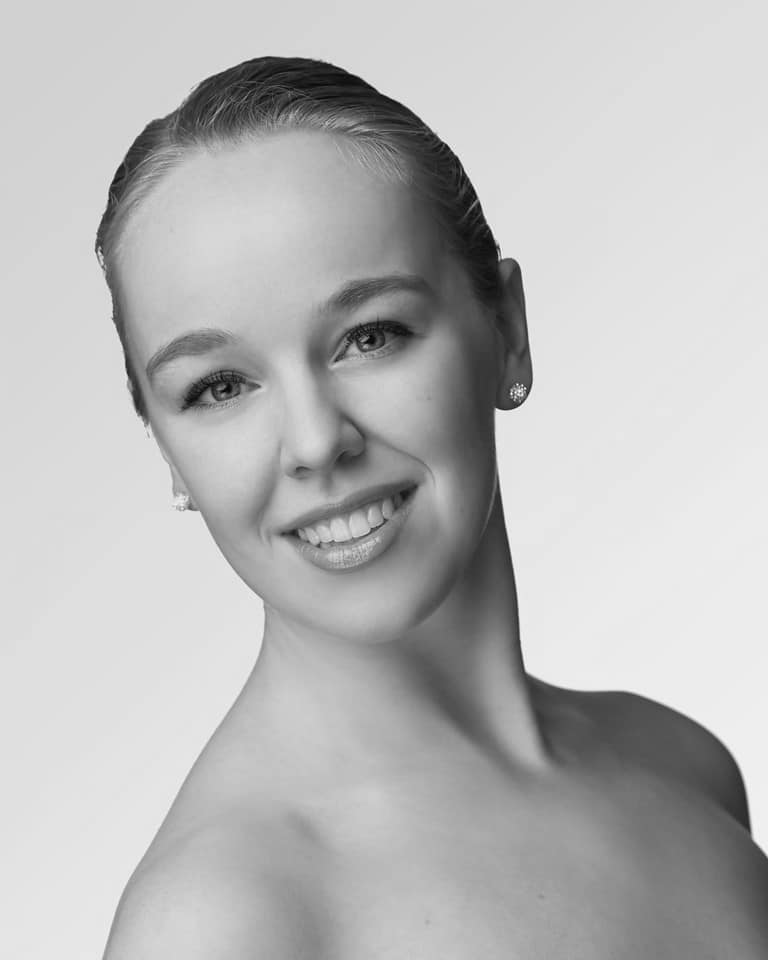 Janel was born and raised in Connecticut and received her early dance training from the Ridgefield Conservatory of Dance. She continued her training through intensives at the Nutmeg Ballet Conservatory, The Hartt School, ABT North Carolina, The Taylor School, and The Ailey School. While a student at Ridgefield Conservatory of Dance, Janel performed Martha Graham’s Steps in the Street as well as numerous roles in The Nutcracker. In 2016 Janel was the recipient of the Patricia Schuster Award and was inducted into the National Honors Society for Dance Arts. Janel graduated magna cum laude from the Fordham Ailey BFA program with a double major in dance and psychology. While at the Ailey School she performed works by Tina Bush, Robert Battle, Janice Rosario, and Jacqulyn Buglisi. After graduating, Janel began working with children diagnosed with Autism as a Registered Behavior Technician and is currently pursuing a Masters in Psychology with an Applied Behavior Analysis focus. Janel looks forward to sharing her passion for dance with the students at the Ridgefield Conservatory of Dance.
Janel was born and raised in Connecticut and received her early dance training from the Ridgefield Conservatory of Dance. She continued her training through intensives at the Nutmeg Ballet Conservatory, The Hartt School, ABT North Carolina, The Taylor School, and The Ailey School. While a student at Ridgefield Conservatory of Dance, Janel performed Martha Graham’s Steps in the Street as well as numerous roles in The Nutcracker. In 2016 Janel was the recipient of the Patricia Schuster Award and was inducted into the National Honors Society for Dance Arts. Janel graduated magna cum laude from the Fordham Ailey BFA program with a double major in dance and psychology. While at the Ailey School she performed works by Tina Bush, Robert Battle, Janice Rosario, and Jacqulyn Buglisi. After graduating, Janel began working with children diagnosed with Autism as a Registered Behavior Technician and is currently pursuing a Masters in Psychology with an Applied Behavior Analysis focus. Janel looks forward to sharing her passion for dance with the students at the Ridgefield Conservatory of Dance.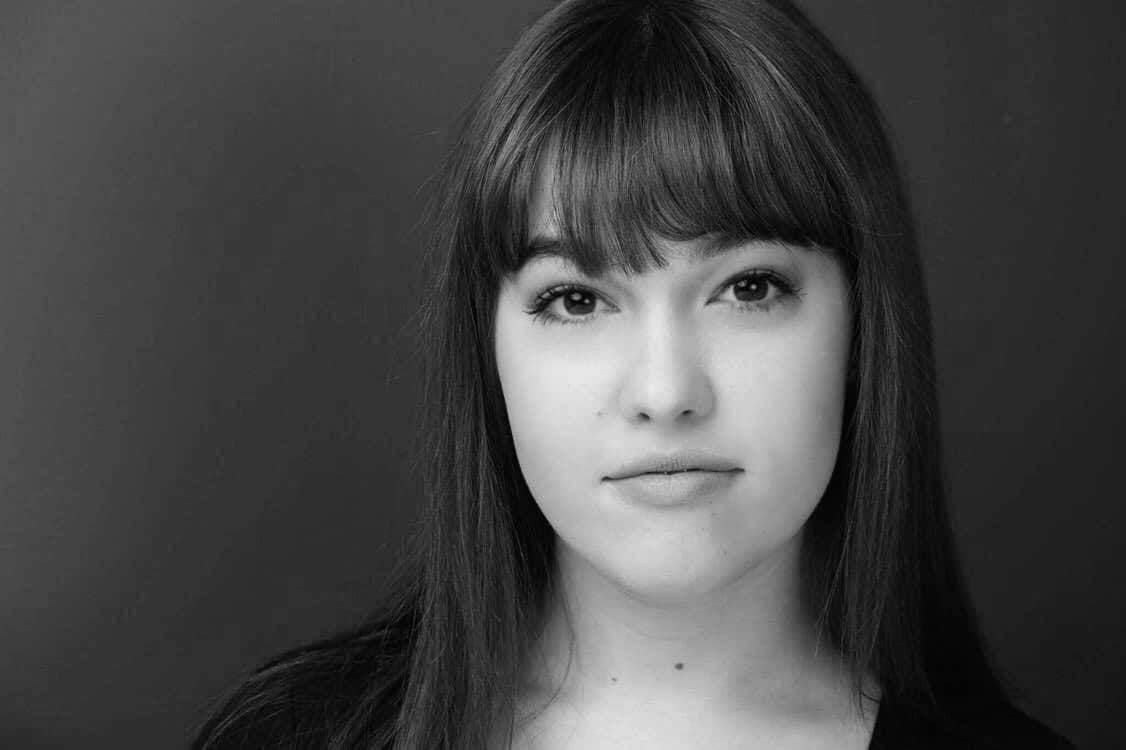 Robyn began her training at the Ridgefield Conservatory of Dance under James Robey. Her ballet training includes summer intensives such as The Bolshoi Ballet, The Ailey School, The Gelsey Kirkland Academy of Classical Ballet, and The Central Pennsylvania Youth Ballet among others. In 2015, she was the recipient of the Patricia Schuster Award and proceeded to earn her degree in dance from Adelphi University. Robyn furthered her ballet education with private coaching under notable dancers such as Ashley Bouder, Carol Sumner, Flavio Salazar, Hilda Morales, Marnie Thomas and Tiler Peck. Robyn currently teaches for Ridgefield Academy Landmark Preschool in Westport, CT.
Robyn began her training at the Ridgefield Conservatory of Dance under James Robey. Her ballet training includes summer intensives such as The Bolshoi Ballet, The Ailey School, The Gelsey Kirkland Academy of Classical Ballet, and The Central Pennsylvania Youth Ballet among others. In 2015, she was the recipient of the Patricia Schuster Award and proceeded to earn her degree in dance from Adelphi University. Robyn furthered her ballet education with private coaching under notable dancers such as Ashley Bouder, Carol Sumner, Flavio Salazar, Hilda Morales, Marnie Thomas and Tiler Peck. Robyn currently teaches for Ridgefield Academy Landmark Preschool in Westport, CT. Marlon Mayers discovered his passion for dance at the age of 14 where he began his dance training when accepted into Frank Sinatra School of the Arts. While attending Frank Sinatra, he also attended Ballet Hispanico, The Abrons Arts Center and The Martha Graham school of Contemporary Dance. Graduating from Frank Sinatra School of the Arts in 2009, Marlon attended Marymount Manhattan College as a B.F.A dance major. Marlon has landed wonderful opportunities that allowed him to work with a wide range of choreographers from different styles of dance such as Jessica Lang, Laurie-Ann Gibson, Daniel Catanach, and Larry Keigwin, just to name a few. Since then he has been a Principal Dancer with the Abrons Arts Center Dance Ensemble, a Corp de Ballet dancer with Urban Ballet Theater and a freelancer with small modern dance companies based in New York City. Although Marlon loves performing he has a passion for teaching. He has had the opportunity to choreograph on the graduating class at Frank Sinatra school of the Arts as well as teach and be a mentor for the underclassmen. He has also presented his own choreography with the American Ballet Theater’s “Make a Ballet” and has submitted and showcased his works to numerous arts festivals. When not rehearsing and staging his own works, Marlon spends his time in a studio teaching and sharing great life lessons to students throughout the greater New York area.
Marlon Mayers discovered his passion for dance at the age of 14 where he began his dance training when accepted into Frank Sinatra School of the Arts. While attending Frank Sinatra, he also attended Ballet Hispanico, The Abrons Arts Center and The Martha Graham school of Contemporary Dance. Graduating from Frank Sinatra School of the Arts in 2009, Marlon attended Marymount Manhattan College as a B.F.A dance major. Marlon has landed wonderful opportunities that allowed him to work with a wide range of choreographers from different styles of dance such as Jessica Lang, Laurie-Ann Gibson, Daniel Catanach, and Larry Keigwin, just to name a few. Since then he has been a Principal Dancer with the Abrons Arts Center Dance Ensemble, a Corp de Ballet dancer with Urban Ballet Theater and a freelancer with small modern dance companies based in New York City. Although Marlon loves performing he has a passion for teaching. He has had the opportunity to choreograph on the graduating class at Frank Sinatra school of the Arts as well as teach and be a mentor for the underclassmen. He has also presented his own choreography with the American Ballet Theater’s “Make a Ballet” and has submitted and showcased his works to numerous arts festivals. When not rehearsing and staging his own works, Marlon spends his time in a studio teaching and sharing great life lessons to students throughout the greater New York area.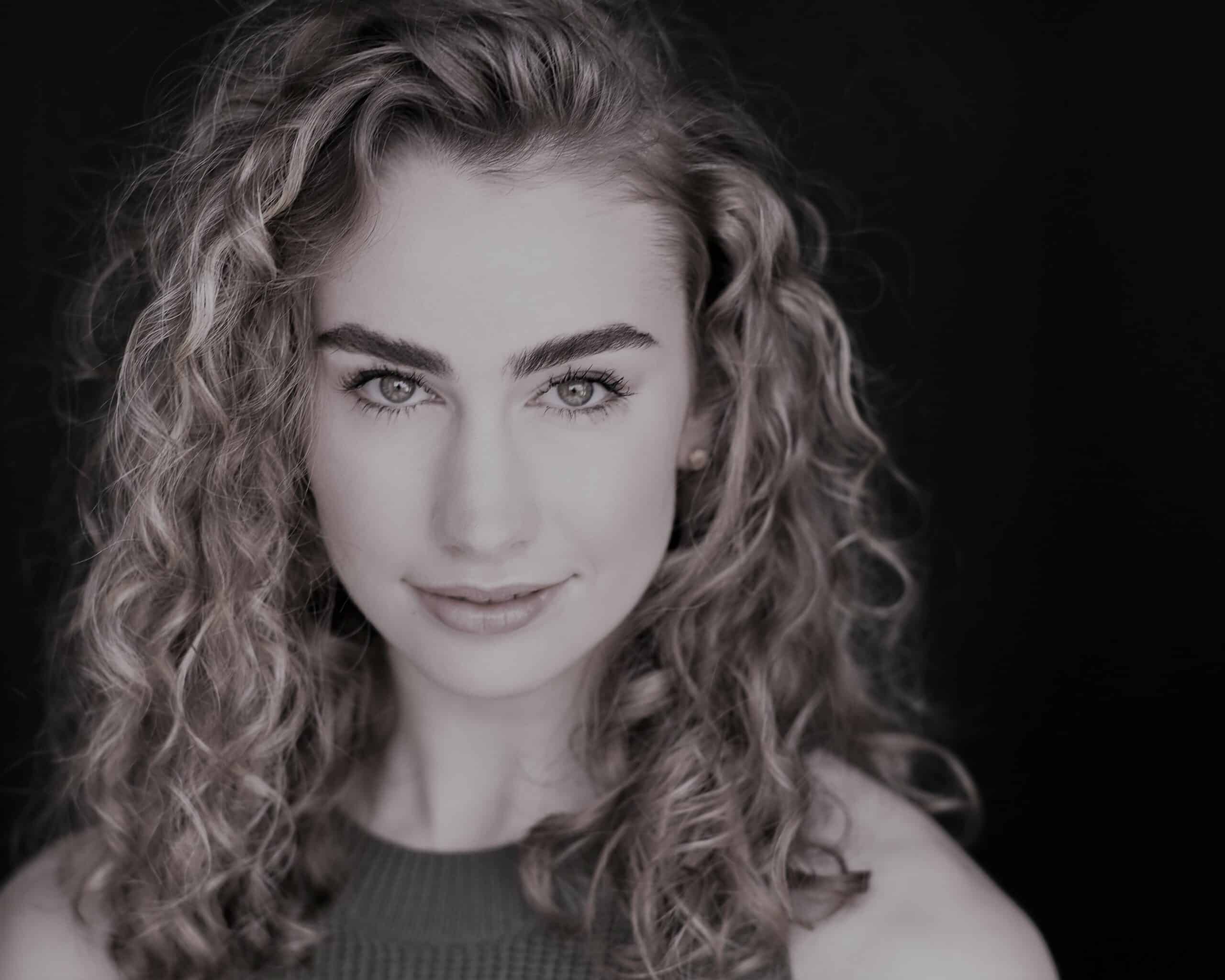 Kelly graduated Summa Cum Laude from Pace University with a B.S. in commercial dance and psychology. At Pace, she performed works by Andy Blankenbuehler, Jessica Lang, Chloe Arnold, and Jason Samuels Smith. She began her training at the Ridgefield Conservatory of Dance under James Robey, and continued her training at Fineline Theatre Arts under Elizabeth Parkinson and Scott Wise, and Mary Ann Lamb. She has also studied under Twyla Tharp, and performed works such as The Fugue and Burundi Drums. Most recently, she has been seen on the national tour of 42nd Street, which was helmed by the 2001 Tony Award-winning team of Mark Bramble and Randy Skinner. In addition, Kelly has performed with the New Bedford Festival Theatre, Ocean Professional Theatre Company, and the Carnegie Hall Exchange. Favorite credits include My Fair Lady, Singin’ in the Rain, and Crazy For You. Aside from performing, Kelly has been teaching a wide variety of styles for 5 years, from students in creative movement to adult levels.
Kelly graduated Summa Cum Laude from Pace University with a B.S. in commercial dance and psychology. At Pace, she performed works by Andy Blankenbuehler, Jessica Lang, Chloe Arnold, and Jason Samuels Smith. She began her training at the Ridgefield Conservatory of Dance under James Robey, and continued her training at Fineline Theatre Arts under Elizabeth Parkinson and Scott Wise, and Mary Ann Lamb. She has also studied under Twyla Tharp, and performed works such as The Fugue and Burundi Drums. Most recently, she has been seen on the national tour of 42nd Street, which was helmed by the 2001 Tony Award-winning team of Mark Bramble and Randy Skinner. In addition, Kelly has performed with the New Bedford Festival Theatre, Ocean Professional Theatre Company, and the Carnegie Hall Exchange. Favorite credits include My Fair Lady, Singin’ in the Rain, and Crazy For You. Aside from performing, Kelly has been teaching a wide variety of styles for 5 years, from students in creative movement to adult levels.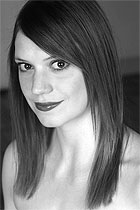 Mary Beth Hansohn received her professional training at The Arlington Center for Dance in Arlington, VA, and studied ballet in the hightest level at The American Ballet Theater Summer Program in New York City, where she performed George Balanchine’s Theme and Variations. She joined The Ohio Ballet as a full member at age 18, and went on to dance in works by Heinz Poll, Donald Byrd, Laura Dean, Ann Marie DeAngelo, Lynne Taylor-Corbett, Stephen Mills, Septime Webre, Salvatore Aiello, Dermot Burke, Val Caniparoli, Jeffrey Hughes, Twyla Tharp, and Alonzo King. Mary Beth has performed with Dayton Ballet, Cincinnati Ballet, The Cleveland Opera, D.C. Contemporary Dance Festival, Neglia Ballet Artists, The Adam Miller Dance Project, The National Tap Ensemble, and Terra Firma Dance Theatre. Mary Beth performed in the 2011 Victoria’s Secret Fashion Show in New York City, which was televised on CBS. In 2014, she appeared and danced in the new television drama series “Flesh and Bone”. Mary Beth has also worked with Edouard Lock at La La La Human Steps in Montreal, and with Karole Armitage at Armitage Cone! Dance in New York City. Some of Ms. Hansohn’s favorite roles include the title role in Giselle, “Mina Harker” in Dracula, “Gerturde” in Hamlet, Le Corsaire pas de deux, “Russian Girl” in George Balanchine’s Serenade, the pas de trois from George Balanchine’s Agon, “Myrtha” in Giselle, and Unnatural Selection, a pas de deux choreographed and danced with her husband, James Graber. Mary Beth has judged dance competitions and choreographed in dance workshops across the country, and continues to teach ballet and contemporary dance in New York.
Mary Beth Hansohn received her professional training at The Arlington Center for Dance in Arlington, VA, and studied ballet in the hightest level at The American Ballet Theater Summer Program in New York City, where she performed George Balanchine’s Theme and Variations. She joined The Ohio Ballet as a full member at age 18, and went on to dance in works by Heinz Poll, Donald Byrd, Laura Dean, Ann Marie DeAngelo, Lynne Taylor-Corbett, Stephen Mills, Septime Webre, Salvatore Aiello, Dermot Burke, Val Caniparoli, Jeffrey Hughes, Twyla Tharp, and Alonzo King. Mary Beth has performed with Dayton Ballet, Cincinnati Ballet, The Cleveland Opera, D.C. Contemporary Dance Festival, Neglia Ballet Artists, The Adam Miller Dance Project, The National Tap Ensemble, and Terra Firma Dance Theatre. Mary Beth performed in the 2011 Victoria’s Secret Fashion Show in New York City, which was televised on CBS. In 2014, she appeared and danced in the new television drama series “Flesh and Bone”. Mary Beth has also worked with Edouard Lock at La La La Human Steps in Montreal, and with Karole Armitage at Armitage Cone! Dance in New York City. Some of Ms. Hansohn’s favorite roles include the title role in Giselle, “Mina Harker” in Dracula, “Gerturde” in Hamlet, Le Corsaire pas de deux, “Russian Girl” in George Balanchine’s Serenade, the pas de trois from George Balanchine’s Agon, “Myrtha” in Giselle, and Unnatural Selection, a pas de deux choreographed and danced with her husband, James Graber. Mary Beth has judged dance competitions and choreographed in dance workshops across the country, and continues to teach ballet and contemporary dance in New York.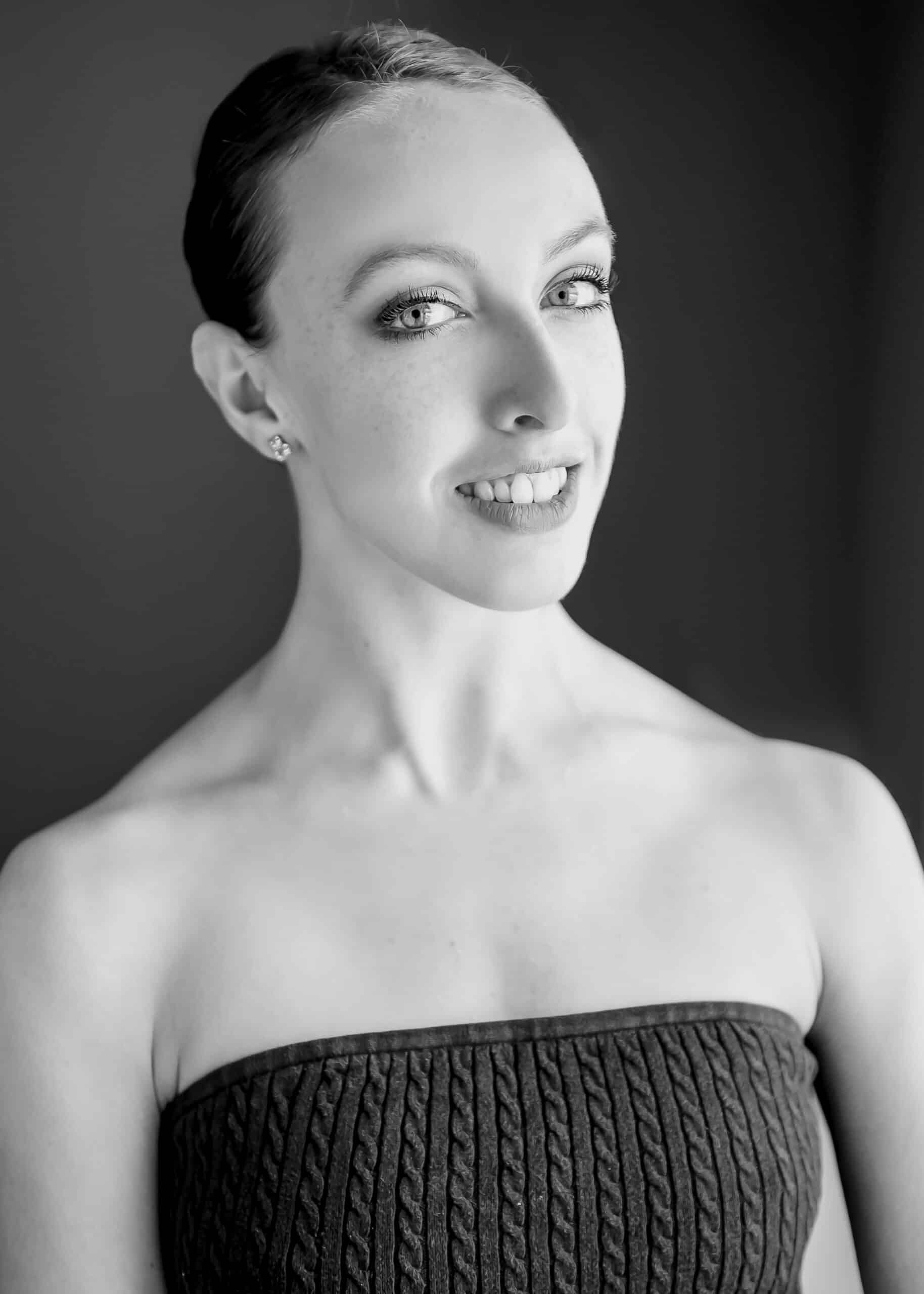 Dona Wiley received her pre-professional dance training at the Ridgefield Conservatory of Dance in Connecticut under the direction of James Robey, and studied at many professional level summer ballet intensives including the American Ballet Theater Summer Program in New York City. Dona Wiley is an ABT® Certified Teacher, who has successfully completed the ABT® Teacher Training Intensive in Pre-Primary through Level 3 of the ABT® National Training Curriculum. As a freelance dancer, Dona currently works with the New York based dance companies Lydia Johnson Dance, Nomad Contemporary Ballet, Neville Dance Theatre, Neglia Ballet Artists, and as the rehearsal director and co-founder of CelloPointe. Her past company credits also include Connecticut Ballet, Staten Island Ballet, Felice Lesser Dance Theatre, IKADA Dance, Ballet Inc, and the Taormina Teatro Group where she enjoyed a principal dance role int he off-broadway play Tchaikovsky. Notable career highlights include performing the title role in Staten Island Ballet’s production of Carmen, as well as dancing the choreography of George Balanchine, Emery LeCrone, Gabrielle Lamb, and David Fernandez, among others. As a dance instructor Dona has taught ballet and pointe, choreographed new works, and set classical repertoire in studios throughout New York, Connecticut, and New Jersey.
Dona Wiley received her pre-professional dance training at the Ridgefield Conservatory of Dance in Connecticut under the direction of James Robey, and studied at many professional level summer ballet intensives including the American Ballet Theater Summer Program in New York City. Dona Wiley is an ABT® Certified Teacher, who has successfully completed the ABT® Teacher Training Intensive in Pre-Primary through Level 3 of the ABT® National Training Curriculum. As a freelance dancer, Dona currently works with the New York based dance companies Lydia Johnson Dance, Nomad Contemporary Ballet, Neville Dance Theatre, Neglia Ballet Artists, and as the rehearsal director and co-founder of CelloPointe. Her past company credits also include Connecticut Ballet, Staten Island Ballet, Felice Lesser Dance Theatre, IKADA Dance, Ballet Inc, and the Taormina Teatro Group where she enjoyed a principal dance role int he off-broadway play Tchaikovsky. Notable career highlights include performing the title role in Staten Island Ballet’s production of Carmen, as well as dancing the choreography of George Balanchine, Emery LeCrone, Gabrielle Lamb, and David Fernandez, among others. As a dance instructor Dona has taught ballet and pointe, choreographed new works, and set classical repertoire in studios throughout New York, Connecticut, and New Jersey. Edgar was born in Portugal. He graduated from the School of Dance of the National Conservatory in Lisbon where he worked with choreographers from Ballet Gulbenkiain, the National Ballet, Escola Superior de Danca, Escola Superior de Teatro and Companhia de Danca de Lisboa. In 1995 he was awarded a scholarship to the Martha Graham School of Contemporary Dance in New York City where he worked with the Martha Graham Dance Ensemble and performed leading and solo roles. In New York City he has worked with Pearl Lang Dance Theater, Sophie Maslow, Jeanette Hemstad, Analysis Dance Company, Chen & Dancers, Nai-Ni Chen Dance Company, Mark Dendy, as well as other independent choreographers. Edgar was a member of the wolrd renowned Les Ballets Trockadero de Monte Carlo and toured extensively for six years (U.S.A., Japan, Australia, Europe, Canada, South America, Central America). He has worked with Underworld Productions Opera. In 2010 he choreographed the opera “Pygmalion”- My Unfair Lady, 2011 “Apollo and Daphne, Clarence and Anita and was the costume designer fro “Don Pasquale” in 2012 and “Il Trionfo dell’Onore” in 2013. In January of 2009 he founded the Edgar Cortes Dance Theater. He was awarded grants by NOMAA and created “Unicornius”, a piece inspired by the Hunt of the Unicorn Tapestries currently at the Cloisters Museum, “Water Poodles, (2010) inspired by Esther Williams and synchronized swimming, and “DALI AQUI” (2011) inspired by Salvador Dali. His work “Quatro” (2012) is inspired by the 4 seasons. The latest work “SOL-I-DO” is inspired by Portugal and its traditions. Edgar is currently working on a new piece “CIRCOPIA”.
Edgar was born in Portugal. He graduated from the School of Dance of the National Conservatory in Lisbon where he worked with choreographers from Ballet Gulbenkiain, the National Ballet, Escola Superior de Danca, Escola Superior de Teatro and Companhia de Danca de Lisboa. In 1995 he was awarded a scholarship to the Martha Graham School of Contemporary Dance in New York City where he worked with the Martha Graham Dance Ensemble and performed leading and solo roles. In New York City he has worked with Pearl Lang Dance Theater, Sophie Maslow, Jeanette Hemstad, Analysis Dance Company, Chen & Dancers, Nai-Ni Chen Dance Company, Mark Dendy, as well as other independent choreographers. Edgar was a member of the wolrd renowned Les Ballets Trockadero de Monte Carlo and toured extensively for six years (U.S.A., Japan, Australia, Europe, Canada, South America, Central America). He has worked with Underworld Productions Opera. In 2010 he choreographed the opera “Pygmalion”- My Unfair Lady, 2011 “Apollo and Daphne, Clarence and Anita and was the costume designer fro “Don Pasquale” in 2012 and “Il Trionfo dell’Onore” in 2013. In January of 2009 he founded the Edgar Cortes Dance Theater. He was awarded grants by NOMAA and created “Unicornius”, a piece inspired by the Hunt of the Unicorn Tapestries currently at the Cloisters Museum, “Water Poodles, (2010) inspired by Esther Williams and synchronized swimming, and “DALI AQUI” (2011) inspired by Salvador Dali. His work “Quatro” (2012) is inspired by the 4 seasons. The latest work “SOL-I-DO” is inspired by Portugal and its traditions. Edgar is currently working on a new piece “CIRCOPIA”.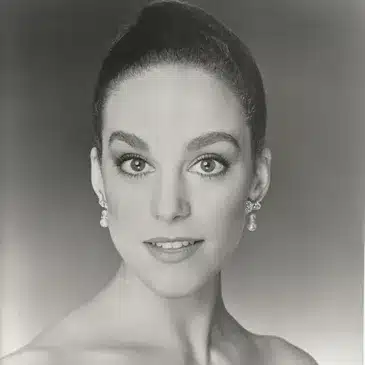
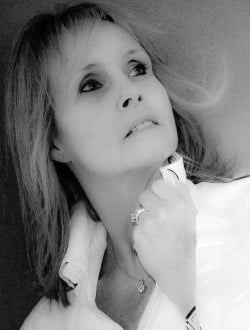 Polly Kingsbury has had an extensive career in dance education. She has taught ballet, modern and jazz throughout Westchester and Connecticut. Polly spent most of her life studying and teaching at the Steffi Nossen School of Dance. During her tenure there she served in many capacities including Educational Director, Operations Director and Senior Staff Instructor. While there she hired, trained and supervised the teaching staff for the Steffi Nossen method curriculum classes and choreographed for the Junior Master Class, Concert Group and many performance groups. She was the Steffi Nossen Children’s Show director and producer from 1979-2004. Her choreography has been performed at the Performing Arts Center at Purchase College. After moving to CT in 2004 she continues to serve as a consultant there. Polly has served as the Dance Coordinator for the Rye City Public Schools teaching PAC and choreographing for musicals, revues and choral groups within the district. For many years she served as a visiting instructor for the Westchester Arts Council teaching classes and workshops for special needs groups throughout the county. Polly has taught and lectured for the Hole in the Wall Gang “COPE” weekends in Southbury, CT. Polly’s performance credits include the Barnspace Dance Project based in Katonah NY and A New Generation of Dance at the Emelin Theatre in Larchmont, NY. Since moving to CT in 2004, Polly has been an enthusiastic supporter of RCD as a guest teacher, student, rehearsal assistant, seamstress, and much more. She is thrilled to be serving in this new capacity at RCD.
Polly Kingsbury has had an extensive career in dance education. She has taught ballet, modern and jazz throughout Westchester and Connecticut. Polly spent most of her life studying and teaching at the Steffi Nossen School of Dance. During her tenure there she served in many capacities including Educational Director, Operations Director and Senior Staff Instructor. While there she hired, trained and supervised the teaching staff for the Steffi Nossen method curriculum classes and choreographed for the Junior Master Class, Concert Group and many performance groups. She was the Steffi Nossen Children’s Show director and producer from 1979-2004. Her choreography has been performed at the Performing Arts Center at Purchase College. After moving to CT in 2004 she continues to serve as a consultant there. Polly has served as the Dance Coordinator for the Rye City Public Schools teaching PAC and choreographing for musicals, revues and choral groups within the district. For many years she served as a visiting instructor for the Westchester Arts Council teaching classes and workshops for special needs groups throughout the county. Polly has taught and lectured for the Hole in the Wall Gang “COPE” weekends in Southbury, CT. Polly’s performance credits include the Barnspace Dance Project based in Katonah NY and A New Generation of Dance at the Emelin Theatre in Larchmont, NY. Since moving to CT in 2004, Polly has been an enthusiastic supporter of RCD as a guest teacher, student, rehearsal assistant, seamstress, and much more. She is thrilled to be serving in this new capacity at RCD. Amy trained at the Boston Conservatory and the Martha Graham School of Contemporary Dance, where she received scholarships from the Gregory Peck Foundation and as a Finalist for the Coca-Cola Award for Artistic Excellence. Ms. Piantaggini is a former member of the Martha Graham Dance Company and the Martha Graham Dance Ensemble, in which she danced many soloist roles including “Satyric Festival Song” and “Conversation of Lovers”. Anna Kisselgoff of the New York Times said that Amy “made a luminous New York debut in Graham’s abstract view…” October 7, 1998. Amy has danced for the companies of Javier Dzul, Richard Move, and James Robey, and currently dances for Edgar Cortes Dance Theater. Amy’s teaching experience includes numerous schools throughout New England including the Hartt School/University of Hartford and as a Graham-based master class guest instructor for Central Michigan State University, Webster University, Western Connecticut University, Endicott College, Sacred Heart University, Barnard College, and Dean College. She received her MFA in Interdisciplinary Arts from Goddard College with a focus in early American Modern Dance and Embodiment Studies. Ms. Piantaggini is a member of the National Dance Education Organization, and served on the Danbury Dance Initiative task force. She established RCD as a charter for National Honors Society for Dance Arts in 2016. Amy is the recipient of the New Connections Award in 2022 for mentoring young women and the Nancy Comstock Andrews Superlative Teaching/Mentoring Award in 2018 for her extensive collaborations between the Conservatory and countless Ridgefield arts organizations.
Amy trained at the Boston Conservatory and the Martha Graham School of Contemporary Dance, where she received scholarships from the Gregory Peck Foundation and as a Finalist for the Coca-Cola Award for Artistic Excellence. Ms. Piantaggini is a former member of the Martha Graham Dance Company and the Martha Graham Dance Ensemble, in which she danced many soloist roles including “Satyric Festival Song” and “Conversation of Lovers”. Anna Kisselgoff of the New York Times said that Amy “made a luminous New York debut in Graham’s abstract view…” October 7, 1998. Amy has danced for the companies of Javier Dzul, Richard Move, and James Robey, and currently dances for Edgar Cortes Dance Theater. Amy’s teaching experience includes numerous schools throughout New England including the Hartt School/University of Hartford and as a Graham-based master class guest instructor for Central Michigan State University, Webster University, Western Connecticut University, Endicott College, Sacred Heart University, Barnard College, and Dean College. She received her MFA in Interdisciplinary Arts from Goddard College with a focus in early American Modern Dance and Embodiment Studies. Ms. Piantaggini is a member of the National Dance Education Organization, and served on the Danbury Dance Initiative task force. She established RCD as a charter for National Honors Society for Dance Arts in 2016. Amy is the recipient of the New Connections Award in 2022 for mentoring young women and the Nancy Comstock Andrews Superlative Teaching/Mentoring Award in 2018 for her extensive collaborations between the Conservatory and countless Ridgefield arts organizations.